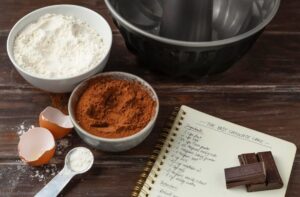The Food Blog
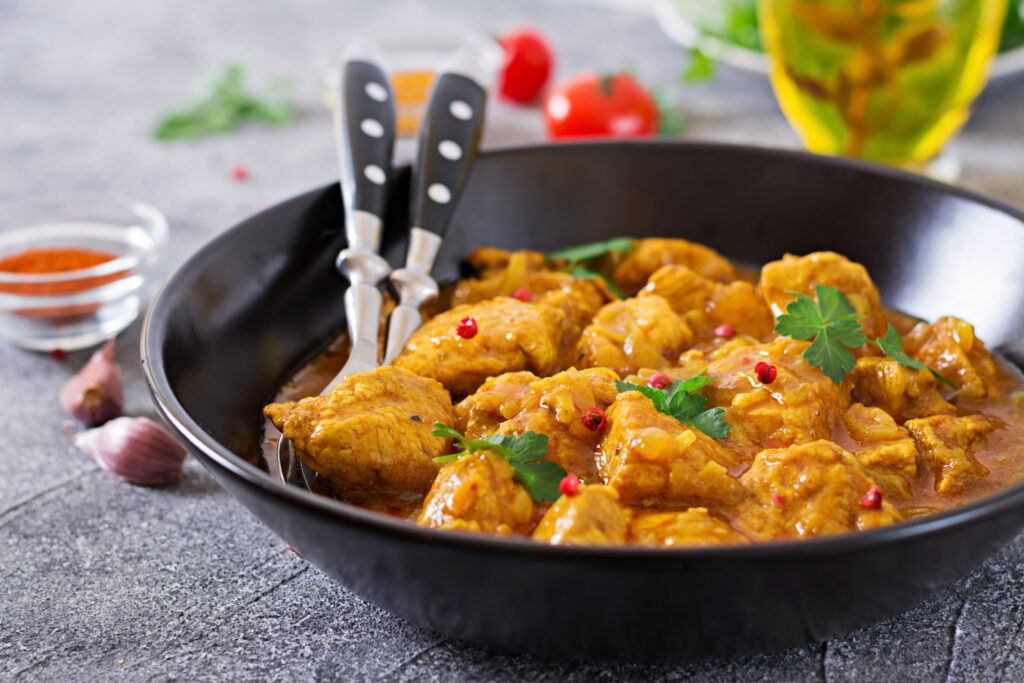
The Ultimate Guide to Indian Curry for Beginners
Indian food is famous for its rich, complex flavours, and one of its most celebrated timeless dishes is curry. If you are new to Indian food or would like to explore the flavours, learning how to make an authentic Indian curry at home can be fun and rewarding. With its aromatic spices and endless regional variations, Indian curry gives you a rich, tingling experience.
Back in this piece, we’ll cover all the particulars you want to know to grasp the craft of creating Indian curry, even in case you are simply starting out. We’ll discuss different curries, key ingredients, mistakes to avoid, and tips for nailing each step of the curry-making process. You’ll learn everything you need to know to start making delicious, homemade Indian curries for your own kitchen.
Why Indian Curry?
Indian curry isn’t just about one dish. It’s a broad category that encompasses a wide range of flavours, textures, and cooking techniques. But why should you consider making curry at home? Here are a few reasons:
- Customisation: When you cook curry yourself, you control the heat level, flavour balance, and ingredients. Prefer a mild curry or a fiery one? The choice is yours!
- Healthier Options: Homemade curries can be made with fresh, healthy ingredients. You can also substitute ingredients to suit your dietary needs (e.g., vegetarian, gluten-free).
- Flavor Burst: Indian curries are packed with various spices. They come together for a taste that’s truly unforgettable. From cumin and coriander to turmeric and cardamom, these spices elevate the dish to a whole new level.
Now that you know why making curry is a great idea, let’s dive into the basics.
Key Ingredients for Indian Curry
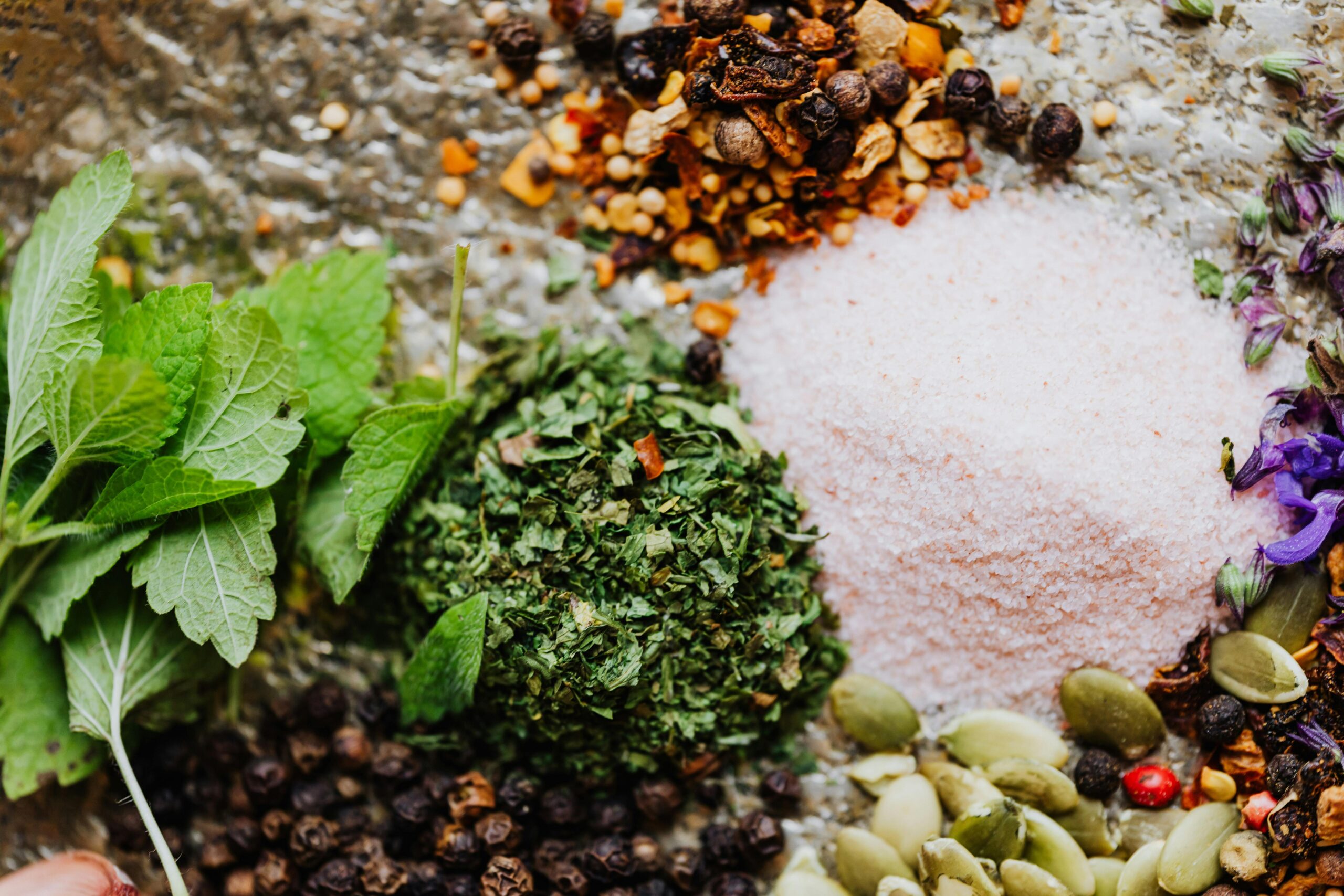
1. Spices and Aromatics
Indian curry is built on a foundation of spices that create complex and rich flavours. The specific spices may vary based on the type of curry you’re making. The following are essential spices commonly used in many Indian curries:
- Cumin: Earthy and warm, cumin is a key ingredient in many Indian dishes, offering a nutty flavour.
- Coriander: This spice has a citrusy, slightly sweet flavour and is often used in curry powders and pastes.
- Turmeric: Known for its golden colour and earthy flavour, turmeric is a must-have in Indian curries. It is known for its anti-inflammatory properties.
- Cardamom: A fragrant spice with a hint of citrus and sweetness, cardamom adds depth to curries.
- Garam Masala: A spice blend that includes cumin, coriander, cardamom, cloves, and other spices. It adds warmth and complexity to curries.
Alongside these spices, onions, garlic, and ginger are the core aromatics that provide a savoury base for most curry dishes.
2. Base Ingredients
- Tomatoes: Fresh tomatoes or canned tomatoes are used in many curry bases. They provide a tangy, slightly sweet flavour and help to thicken the curry.
- Yoghurt or Cream: Depending on the curry, yoghurt or cream can be added to enrich the sauce and balance out the heat of the spices.
- Coconut Milk: Common in South Indian curries, coconut milk adds a creamy texture and subtle sweetness to the dish.
- Lentils and Chickpeas: These are common in vegetarian curries and provide protein and texture.
3. Protein and Vegetables
You can make a curry with various proteins, such as chicken, beef, lamb, or fish. For vegetarian options, consider adding vegetables like spinach, cauliflower, potatoes, peas, and eggplant. Tofu or paneer (Indian cheese) is also popular for vegetarian curries.
Essential Curry Cooking Techniques
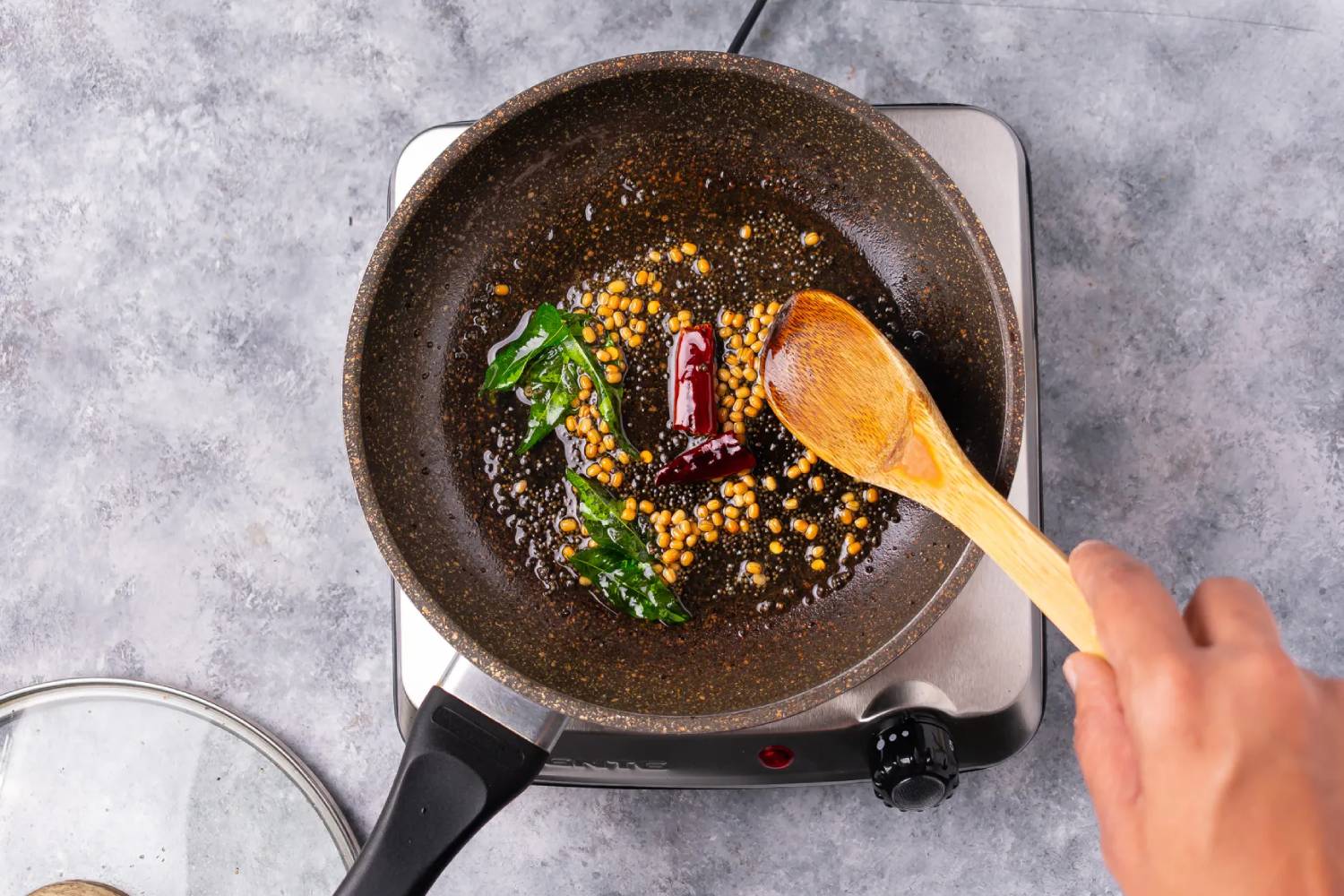
The way you cook the curry is just as important as the ingredients. Here are some key techniques to help you create a perfect curry:
1. Tadka (Tempering the Spices)
One key technique for making curry is tadka. This means frying whole spices in hot oil. It helps release their oils and aromas. This process is crucial to infuse the oil with the spices’ flavours. Common spices used for tadka include cumin seeds, mustard seeds, and dried red chillies.
2. Browning the Onions
Onions are the base of most curry dishes. Browning the onions until they are caramelised enhances their natural sweetness and deepens the flavour of the curry. Be patient during this step, as it can take around 10-15 minutes, but it is well worth the time.
3. Simmering for Richness
Once you’ve added your spices and main ingredients, simmering the curry for a longer period of time allows the flavours to meld together. This creates a rich, full-bodied sauce that makes the curry mouthwateringly delicious. You can simmer your curry on low heat for 30-60 minutes, depending on the type of curry you’re making.
4. Balancing Flavours
A great curry is all about balancing the flavours: spicy, salty, sweet, and sour. Don’t hesitate to taste your curry at different stages and adjust the seasonings as needed. If your curry is too spicy, add a dollop of yoghurt or a splash of coconut milk to cool it down. If it’s too acidic, a pinch of sugar or a squeeze of lemon can balance it out.
Different Types of Indian Curry
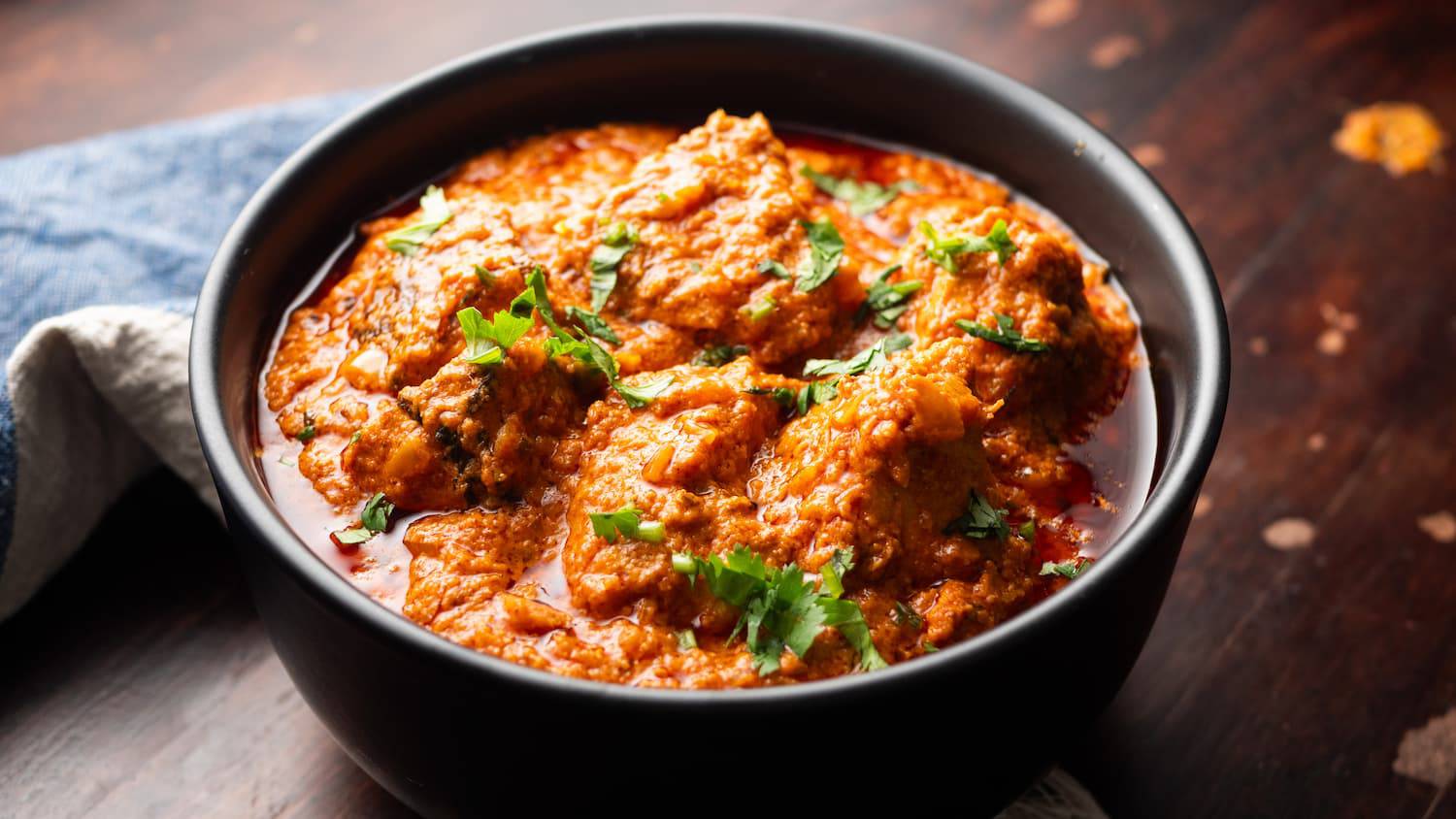
Indian curry isn’t a one-size-fits-all dish. It’s diverse, with each region offering its own unique variation. Here are a few popular types of curry to get you started:
1. Butter Chicken (Murgh Makhani)
This is perhaps the most well-known Indian curry worldwide. The buttery, creamy sauce combined with tender chicken makes it a comforting and indulgent dish. Butter chicken is often served with naan or basmati rice.
2. Chicken Tikka Masala
While its origins are debated, chicken tikka masala is a beloved curry in the UK and around the world. The chicken is marinated in a blend of spices and yoghurt and then cooked in a creamy, tomato-based sauce.
3. Vindaloo
For those who like heat, vindaloo is a fiery curry originating from Goa. Typically made with pork or chicken, the curry is made with a combination of vinegar, garlic, and spicy chillies for a tangy, intense flavour.
4. Saag Paneer
A popular vegetarian option, saag paneer combines tender paneer (Indian cheese) with a rich, spiced spinach gravy. It’s hearty and packed with flavour, perfect for pairing with naan.
5. Rogan Josh
A famous dish from Kashmir, rogan josh is a lamb curry with a fragrant, mildly spiced gravy. The dish is known for its deep red colour, which comes from the use of Kashmiri red chillies.
6. Dal Tadka
This is a simple yet flavourful curry made with yellow lentils. It’s spiced with garam masala, turmeric, cumin, and ginger, and is a staple in Indian households. It’s often served with rice or flatbreads.
Tips for Making the Best Indian Curry
- Use Fresh Spices: Spices lose their potency over time, so opt for fresh, whole spices and grind them as needed for the most intense flavour.
- Cook in Batches: If you’re making a large batch, you can make the curry base in advance and freeze it. This allows the flavours to meld together over time.
- Control the Heat: If you’re sensitive to spice, start by adding smaller amounts of chili powder or fresh chillies, and taste as you go. You can always add more, but you can’t take it away.
- Pair with Sides: Indian curries are often paired with naan, basmati rice, or roti to balance out the spices and provide some texture.
Indian Curry for Dinner
Making Indian curry at home can seem daunting. With a little practice, you can cook delicious, aromatic curries that rival your favourite Indian restaurant. By understanding the key ingredients, cooking techniques, and types of curries, you can try out and find your own favourite recipes. Whether you prefer mild and creamy curries or bold, spicy ones, there’s a curry for everyone.
So gather your spices, prep your ingredients, and start cooking! The world of Indian curry is yours to explore. With this guide, you’ll be able to create restaurant-quality curries in your very own kitchen. Happy cooking!





